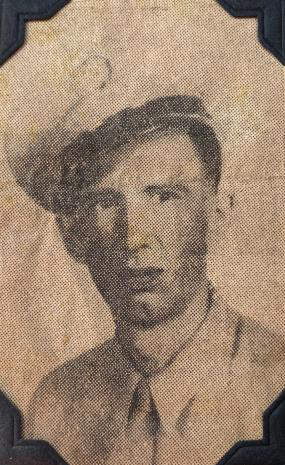
Introducing SGT Anthony J. Hascek, WWII Infantry, One of Cranford’s 86
Written by Janet Cymbaluk Ashnault, Proofread by Don Sweeney, Military Expertise by Vic Bary
The 86 servicemen from Cranford who never made it home from war are not able to speak for themselves. Vowing that these men will never become “just names”, the Cranford 86 team continues on its mission to tell their stories, one by one. This is the first time that we are profiling a veteran of the Italian Campaign in World War II. After conducting the research to follow this infantry soldier’s route across Italy, we were shocked and amazed at what he and his fellow soldiers had to endure. Described here through the experiences of this young man from Cranford, this very critical piece of WWII history and its participants, should never be forgotten.
When I was a very young child, living in our Dietz Street neighborhood in Cranford, I remember a conversation with my father, Myron Cymbaluk. Somehow the subject became WWII and he told me that he lost his buddy in the war. I recall him gesturing towards the end of Myrtle Street, which used to be called Kaplan Street, where the Hascek family once lived. My father served on Guam, and his friend, Anton Hascek, went to Europe “where things were really bad”. The sadness that I heard that day in my father’s voice became a memory which has stayed with me throughout my life. When I volunteered for the Cranford 86 project, the thought of my father’s friend still lingered in my head. When the time came, I wanted to be sure to do him justice, telling his story as best that we could.
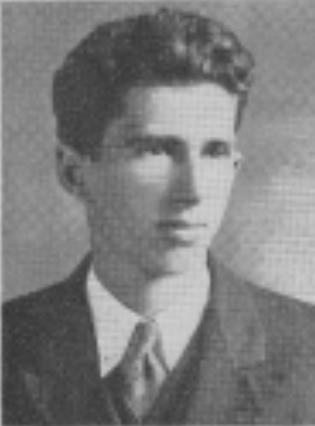
Anthony Joseph Hascek was born in New York City on July 22, 1916 to Katherine and Joseph Hascek. Those who knew him, called him “Anton”. In 1921, Anton was joined by a younger brother, Alfred and the Hasceks moved to Cranford in the 1930’s. Anton graduated from Cranford High School in 1936, with his friend “Mere”, Myron Cymbaluk. In the yearbook, it was said that he packed a he-man’s punch and was a Golden Gloves contender. Anton liked reading and traveling, was fond of animals and was well-liked by his many friends.
On October 16, 1940, Anton and Mere both went to Local Board No. 5 in Cranford to register for the draft. At the time Anton worked for the Utility Blade Company, which was a razor blade factory on the corner of Centennial and Winans Avenues. On his draft registration, Anton’s height and weight were listed as six foot two inches and 134 pounds. No wonder he signed my father’s yearbook as “Slim Hascek”!
My father’s younger brother, Willie Cymbaluk is currently age 94. According to Uncle Willie, in late 1940, he and my father had gone across the railroad tracks near their home on Dermody Street to cut down a tree. As they were cutting and gathering the wood to take home, Anton Hascek came along and said, “Hey Mere, what do you think about taking a trip to California?” Well, my father dropped everything and took off with Anton to make their plans, leaving young Willie to bring home the tree. If I didn’t know better, I would think that Uncle Willie is still mad about that to this day!
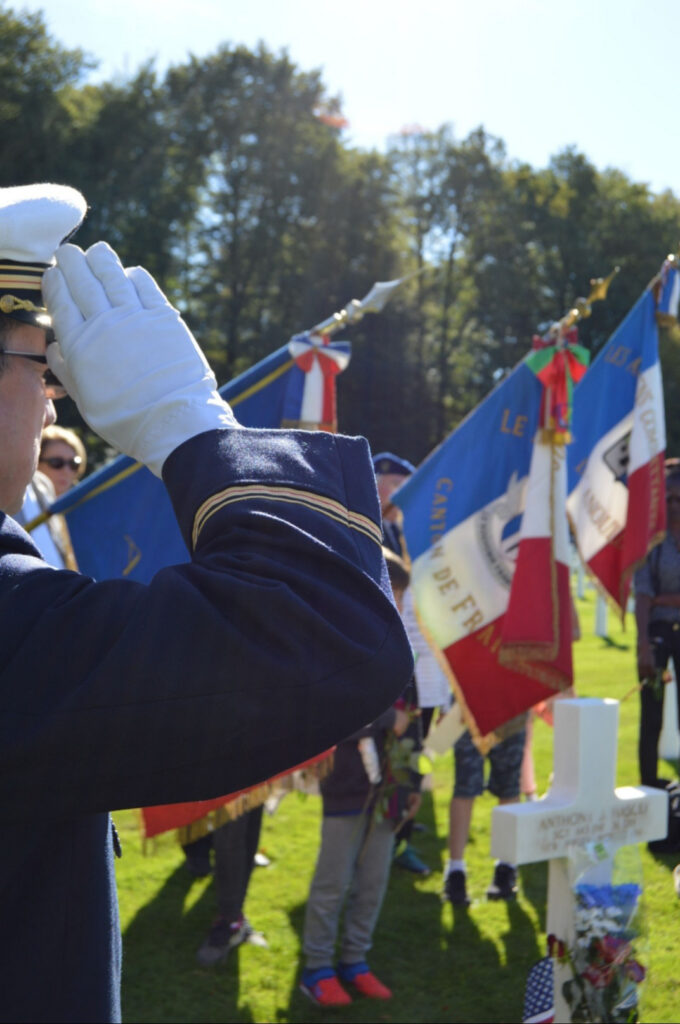
Perhaps, after registering for the draft, these two young men realized what the future might bring and decided that now, rather than later, was the time to have a little fun and see the country. They ended up in Alhambra, California and worked for a painting contractor. My father told me that he and Anton were still in California when Pearl Harbor was attacked and they both tried to enlist in the military, but were rejected. After a little over a year on the West Coast, they returned home to Cranford and their sightseeing days were over for the moment. Unbeknownst to either of them, they were both destined to see many more new places, courtesy of the United States Army. Despite a war going on, Anton carried on with his life and entered the machinist’s trade. He was employed by the Watson-Stillman Company in Roselle, which manufactured hydraulic presses. In November of 1942, his buddy Mere was drafted and Anton apparently became quite enamored with the young lady in his life, Isabelle Phillips, and the two were married on December 16th. A few months later, it was Anton’s number that came up and, still very much a newlywed, he was off to serve his country.
Researching a serviceman for a Cranford 86 story has varying degrees of difficulty. Sometimes, the family produces a box from the attic, full of photographs, letters and documents, in which case, we feel that the story has practically been handed to us on a silver platter. Other times, we start with next to nothing and have to rely on our research skills to help us to recreate our hometown hero’s tour of duty. In the case of SGT Hascek, it was the latter. We were very happy to locate Anton’s nephew, Jeffrey Hascek, living in New Jersey. Although Jeff was only able to provide us with a single letter and an obituary, he gave us his support and gladly sponsored his uncle’s banner. Coincidentally, Jeff told me that he too grew up on Dietz Street, as I did, but in neighboring Roselle. Jeff assured me that he walked past my house many times on his way to sleigh ride on the hills that edge the Garden State Parkway.
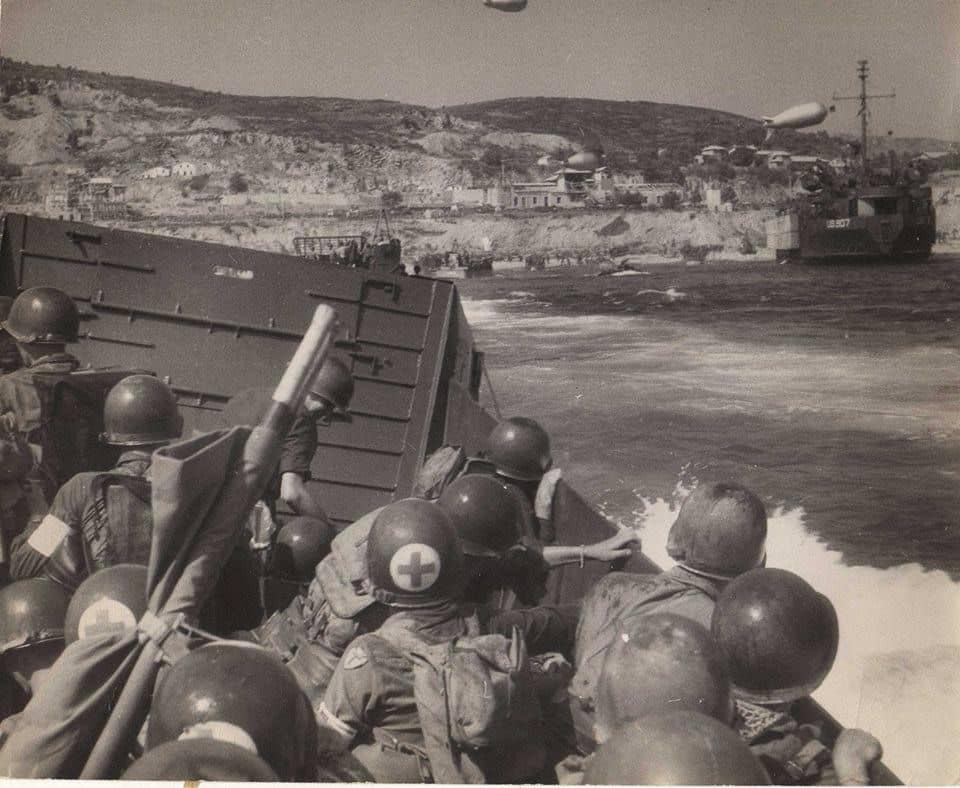
Anton Hascek – US Army
After attending boot camp at Fort Meade in Maryland, we believe that Anton went overseas in October of 1943. Most likely he was sent to a replacement depot, where he was assigned to the 36th Infantry Division. The 36th, or “Texas Division” was organized during WWI from units of the Texas and Oklahoma National Guard. As an all-Texas unit, it was sent to the European Theater of Operations in April 1943. Before Anton joined them, the highly-trained 36th had already successfully invaded the European mainland, going ashore near Salerno, Italy. In the bloody battle that took place there, the unit suffered more than 4,000 casualties with the 143rd Infantry Regiment alone losing 1,144 men.
Replacements to the 36th Infantry Division, such as Anton, were often non-Texans and jokingly referred to as “those damn Yankees”. Within the 36th, Anton became a part of the 143rd Infantry Regiment, 2nd Battalion, Company G, important details to remember while reading his story. Cranford Chronicle articles indicate that he was a machine gunner. With guidance from the director of the Texas Military Forces Museum, we have determined that Anton would have been in the weapons platoon of Company G, armed with a M1919A4 Browning .30 caliber light machine gun.
Italy’s involvement in the events of that time was a complicated web of ideology, politics, and diplomacy. They joined WWII in 1940, aligning with Germany. Italy’s widespread fighting on multiple fronts, with disastrous losses, led to the collapse of the Italian Empire. Mussolini’s Fascist regime ended in 1943, and with the northern half of their country occupied by German troops, Italy joined with Allied Forces and declared war on Germany in that same year.
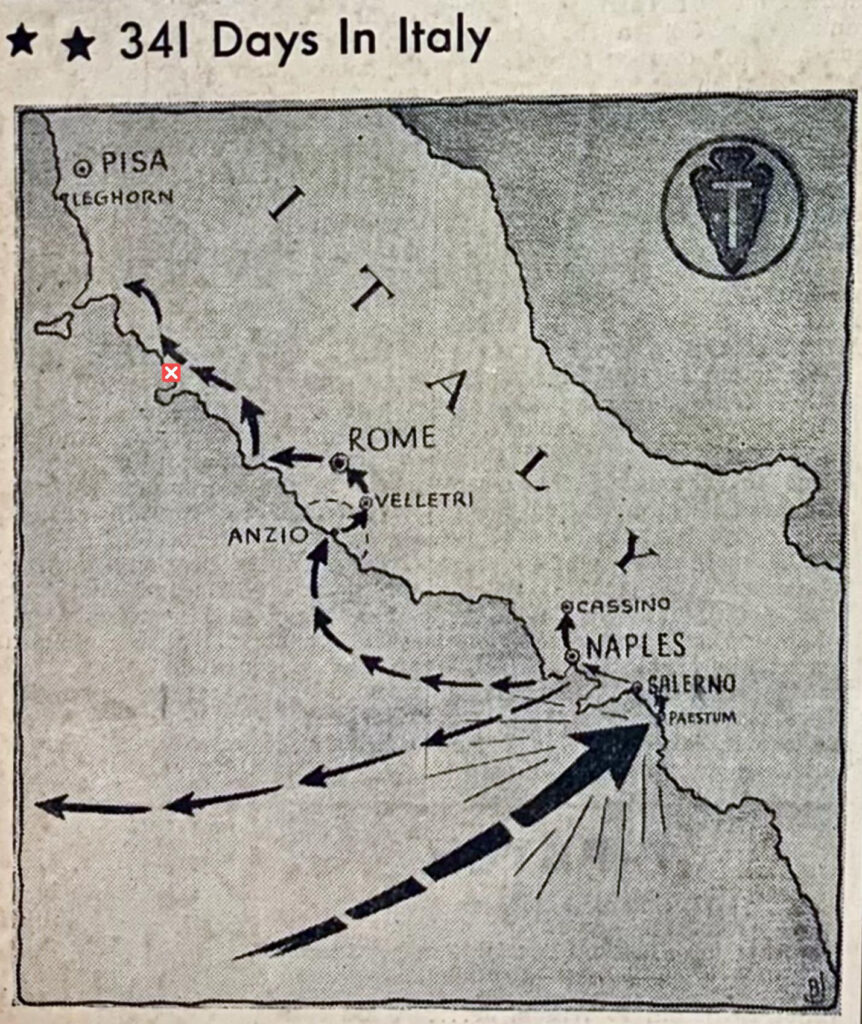
Fighting Amidst the Olive Trees – The Battle of San Pietro
The town of San Pietro lies at the threshold of the Liri Valley. The valley presented a wide, flat corridor through the mountains of Italy and possession of this area was of great strategic importance. This is most likely where Anton Hascek experienced combat for the first time. Hoping to gain control of the area, the three battalions of the 143rd attacked San Pietro. Anton’s 2nd Battalion, went in from the valley, where the sloping terrain was terraced for the purpose of growing olives. The attack was to begin from the “line of departure” at 0620 on December 8, 1943. In order to be in place on time, the battalion had to leave its mountaintop position at midnight of the 7th. Cold rain and sleet had created muddy conditions, and the route, which was straight down, was described as “one big slide”. For nine days, in extremely cold weather, a battle raged until the Germans finally retreated. The 143rd had taken San Pietro, opening up the valley to the Allied Forces, but not without significant losses.
In a recorded interview obtained from the Library of Congress website, Joseph Massura, also in Company G of the 143rd, spent Christmas Day, 1943 in a foxhole outside the rubble of what had been San Pietro. Joseph described how frequent changes in their location necessitated digging a new foxhole almost every night. The terrain around San Pietro was very rugged and each evening the weary men would begin the arduous task of chipping away at the frozen, rocky ground. In the dark, after a while as the men grew more exhausted, the digging sounds would start to slow down considerably. It only took the firing of one enemy shell to quicken that pace into a frenzy, pushing the men to finish their excavation, which would shelter them for the night. Joseph Massura also described the olive terraces where the trees had been blown to bits. In a visit back to the area in the 1980’s, he was glad to learn that olive trees were resilient and would send up shoots from the battered stumps. At the time of his visit, the orchards had rejuvenated themselves and the trees were full of fruit.
Nicholas Bozic was a Forward Observer who was attached to Anton’s Company G during the Battle of San Pietro. FO’s are responsible for calling for and adjusting artillery fire onto enemy targets. Nick described the hell of encountering machine gun, mortar and sniper fire as he tried to advance up and over each of the olive terraces. Once he had a communications line run to his front position, he was able to do his job, literally, calling the shots. It was apparent that the enemy had radio locating devices, as every time he would call for fire, he would end up getting shelled. Nick couldn’t remove his boots at night to sleep, because if he did, they would freeze solid and be impossible to put on in the morning.
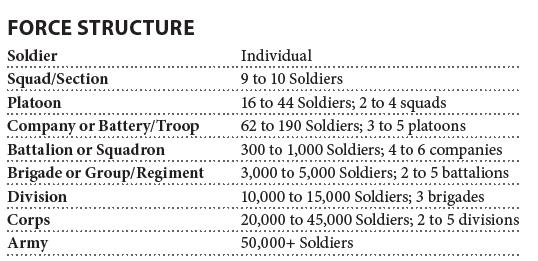
Doomed From the Start – Crossing the Rapido River
After a brief rest in which they received replacement soldiers, the 143rd headed up the Liri Valley with the Texas Division. Deemed to be an insurmountable mission by many who were involved, the 36th was to cross the Rapido River, which was one of the features of the enemy’s Gustav Line. A daunting, defensive band of interconnected fortifications, both natural and man-made, the Gustav Line stretched across the narrowest part of the Italian peninsula. Approaches to the Rapido were grassy, level fields, giving plenty of visibility to those in a defensive position. The area was laced with minefields, with some of the mines being of a newer, wooden variety, which were almost impossible to detect. Edged by vertical banks, the cold water of the river flowed swiftly. Elements of three German units awaited them, including two Panzer tank regiments. Two crossing attempts were made, and despite the dogged determination of the troops, both were horrific failures. Anton’s battalion was ordered to cross at 2340 hours on January 21st, but his company was held back at the footbridge to protect the rear. We were able to locate an analysis of the Rapido River crossing from Fort Benning’s Infantry School. The document detailed all that went wrong, minefields improperly cleared, battalions lost in darkness, smoke and fog, and rubber boats either flipped in the river or rendered useless after being hit by shrapnel. Communication equipment failures and depletion of ammunition also contributed to the chaos. In terms of casualties suffered, the ill-fated river crossing resulted in the most costly 48 hour time period experienced by the 143rd Infantry Regiment during its entire involvement overseas. After the war, at the insistence of the veterans of the 36th Infantry Division, the incident became the focus of a congressional investigation. We can only hope that something was learned from this tragic piece of history.
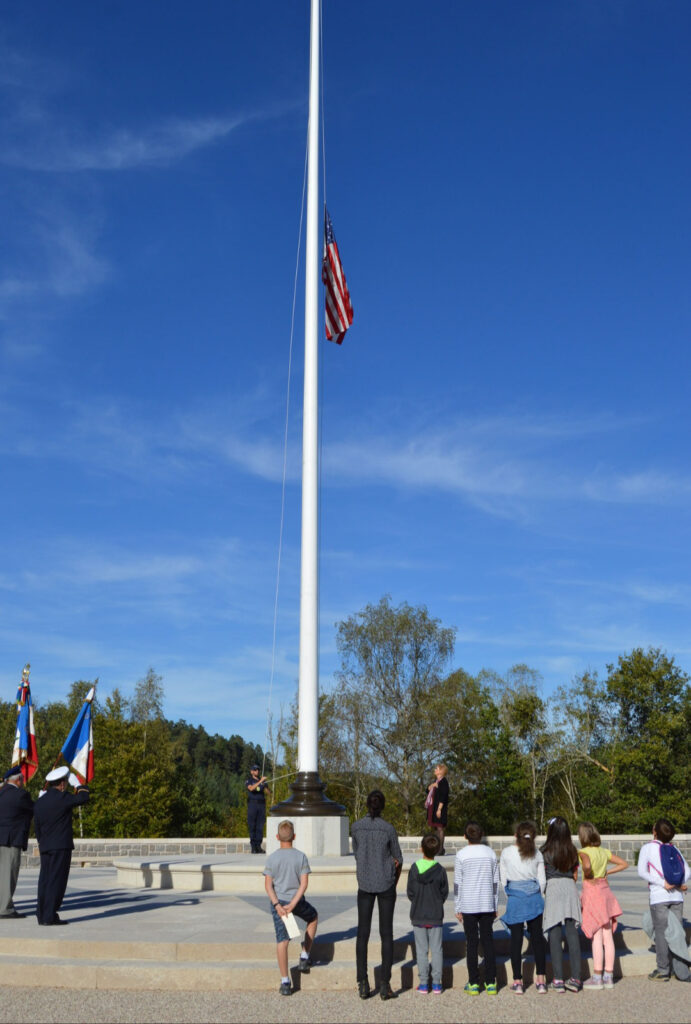
Breaking Through – The Gustav Line and Anzio
Failure to break through the Gustav Line was preventing the Allies from their mission of advancing to Rome. In a peripheral approach to defeating Nazi Germany in Italy, an amphibious invasion was planned for Anzio, with hopes of outflanking the Gustav Line. On January 20th, 1944, the enemy was taken by surprise and the Anzio landing was made with relative ease. But, almost immediately, thousands of German troops were redirected to the landing site. What followed around Anzio was four months of savage fighting in which neither side could gain any ground.
With troops locked in a stalemate across Italy, a plan for a new offensive was conceived. Timed to restrict the Germans from sending reinforcements from Italy to France, once the Normandy Invasion began, Operation Diadem began in mid-May. Assaults began along the Gustav Line and the 36th Infantry Division joined other Allied Forces at Anzio and pushed towards Velletri. Under cover of darkness, the 142nd and 143rd Infantry Regiments boldly scaled a 2,000 foot peak at the rear of Velletri. Reports stated that machine-gunners, like Anton, who normally worked with a crew of four, were on their own to carry the back-breaking load of equipment up the mountain. This stealthy attack on Velletri was a great success and was directly responsible for tremendous gains which were made in early June. Operation Diadem resulted in the Allied breakthrough at Cassino and the breakout at Anzio, leading to the capture of Rome.
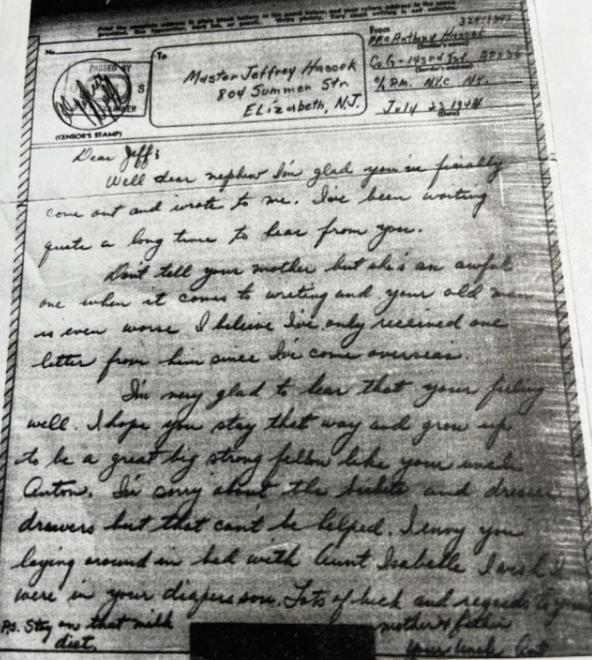
How Did Anton Hascek Earn His Purple Heart?
U.S. World War II Hospital Admission Card Files indicate that Anton was wounded in the line of duty in June of 1944, shot in the heel with the causative agent listed as a rifle bullet. The Cranford Chronicle puts that day as June 13th. Willie Cymbaluk remembers hearing that Anton was in a tree, picking fruit to eat, when he was hit in the foot by a sniper. This makes sense, as during this time the regiment was moving quickly and possibly outrunning their food and supply trucks. On June 11th, the 143rd Infantry Regiment was northwest of Rome, with the Italian coast to their left. Information was received that the Germans were supplied with gas grenades and all personnel were ordered to wear gas masks. On the north side of the the Albegna River, two German strong points occupied the hills. On the 13th, at dusk, the 2nd Battalion of the 143rd launched an attack. Company G was hard hit by long range enemy machine gun and artillery fire, but held fast to its position. This was a short period of hard fighting in which enemy defense was broken and the division was able to cross the river. We usually find a grain of truth in stories from family and friends, so we wonder, was Anton wounded by sniper fire earlier in the day on the 13th? Was he spared the violence of that evening? As of now, we are not sure.
After being wounded, Anton was hospitalized for about 2 months and he received a Purple Heart and an Infantry Combat Citation. Apparently, during this time he had a chance to catch up and write some letters home. On July 23, 1944 Anton wrote a good-humored note to his 3-week-old nephew Jeff. The V-mail, addressed to Master Jeffrey Hascek, welcomed Jeff to the world and told him to “grow up to be a great big strong fellow, like your Uncle Anton”. Although their lives together on this earth coincided for only a few months, this short note has given Jeff Hascek a strong connection to the uncle that he never met. We are pleased to be working with Jeff on our mission to bring awareness to the magnitude of Anton Hascek’s service and sacrifice.
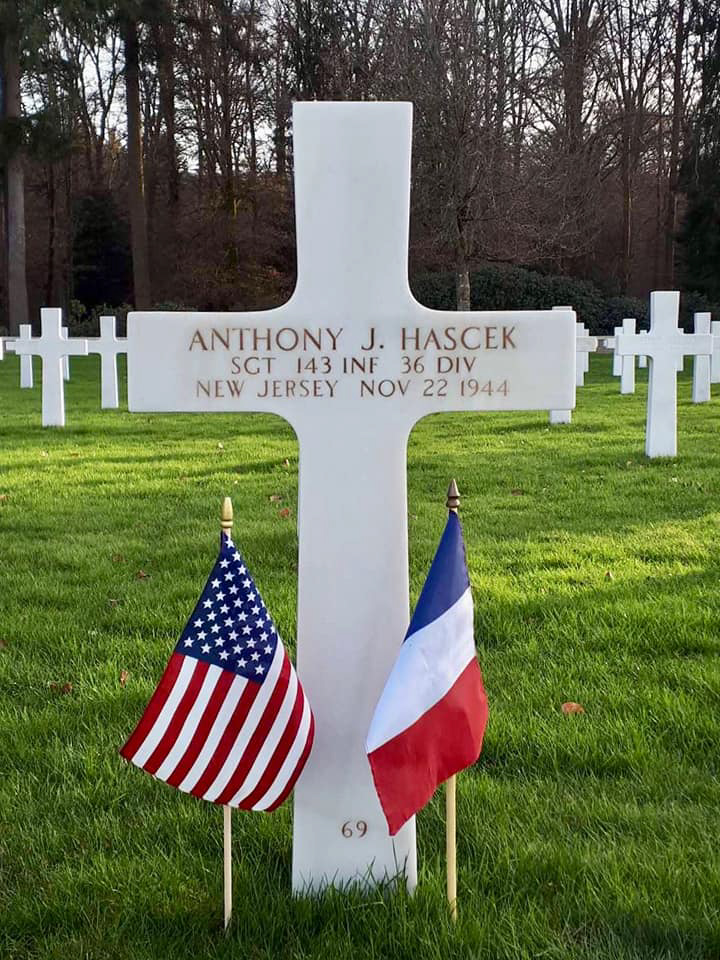
The Texas Division Invades Southern France
We believe that Anton was discharged from the hospital and was able to rejoin his regiment in time to say “Arrivederci” to Italy and head off to France. When Company G veteran Joe Massura described the Invasion of Southern France, he said that it went “as smooth as silk”. They had support from battleships, and with the big guns firing, the noise was deafening as Anton and Joe hit the shore with their battalion. At this point in time, a taste of success and victory was appreciated and needed by these weary warriors.
In France, Anton’s 2nd Battalion was part of a highly successful four-day mission carried out by “Task Force Butler”. Under the command of Brigadier General Butler, the battalion rode into battle on two-and-a-half-ton trucks. Along with a sufficient amount of firepower, this self-contained unit also included engineers, mechanics and medics. Surrounded by a full cavalry squadron, TF Butler went forward 235 miles, captured 3,500 German prisoners, and liberated dozens of communities in Southern France. The task force was first to arrive at Montélimar, where they contributed significantly to the defeat of an entire enemy field army. Reports from TF Butler indicate that Company G had captured 600 enemy prisoners at Digne and 1,000 at Gap.
Last Letter Home
Anton’s last letter home was written on November 10, 1944. His outfit was stationed in a forest and had been in constant battle for several days. He wrote that they had just been issued their winter clothing which was most welcomed as there was already an inch of snow on the ground. In their long steady advance through France the 143rd targeted their enemy with constant, aggressive action, resulting in frequent skirmishes. During this time, patrols from all units of the regiment were active at night. Joseph Massura, Company G, described that being sent on a night patrol was high adventure, but extremely frightening. You wanted trustworthy people with you, ones that were adept and stealthy and weren’t going to run into a tree, drop their gun, or trip in the dark! Patrol members kept 20 feet apart and carried 2 stones in their pocket, using them to click twice to indicate danger. On November 9th, Company G sent out a patrol onto Le Cours mountain, consisting of one officer and eight enlisted men. I often wonder as I read the activities of Company G, was Anton Hascek in this group? A current satellite view of Le Cours mountain shows that indeed, it is a forested area as Anton described to his family.
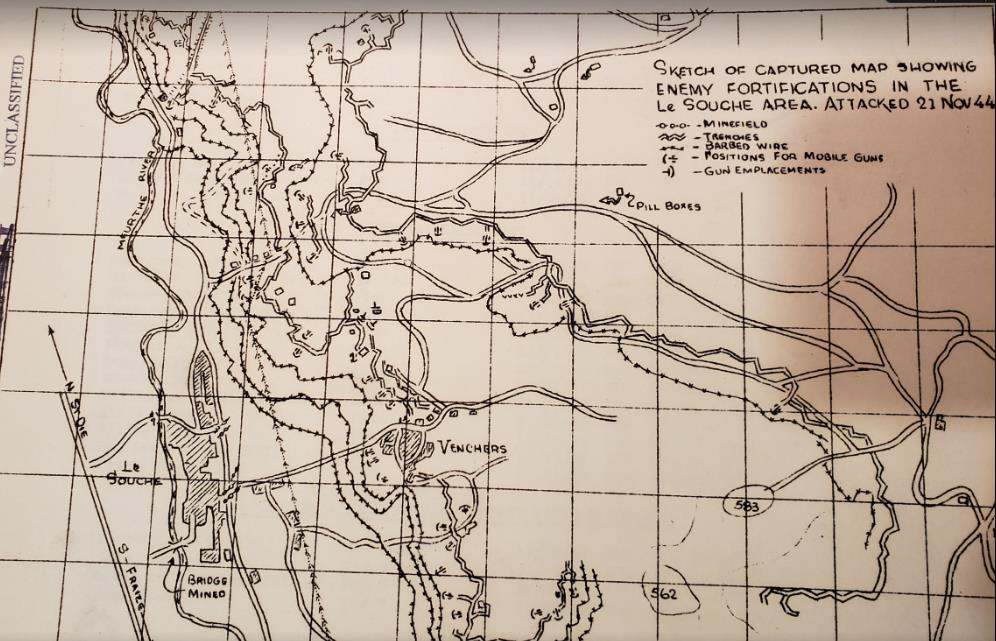
Making the Ultimate Sacrifice
And now comes what is always the most difficult part of the story to tell, the events that we believe, led up to our Cranford serviceman’s death. The 143rd was in the Le Souche area for an attack which would begin on November 21st. Referring to the map obtained from the US Army Heritage Museum Library, take note of the German fortifications in place at that time. Trenches, tangles of barbed wire, gun emplacements and concrete pillboxes all filled the area through which the Meurthe River flowed . A present-day internet map search did not find the town of Le Souche . However, we easily found the town of Venchères, which is shown on the 1944 map. Below are excerpts from the actual After Action Reports of the 143rd Infantry. Note again that Anton Hascek was in the 2nd Battalion, Company G:
“On November 22, the 143rd occupied the high ground of Le Souche and west slopes of hill at (map sector) V-443503. By daylight the 2nd Battalion had moved to Le Souche and at 0730, all 3 battalions attacked in their zones of action, meeting strong resistance from machine guns, mortars and artillery. During the morning, the 2ndBattalion advanced considerably, but just after noon, both Companies E and G were counterattacked and pushed back. As the afternoon drew to a close, the 2ndBattalion was well organized beyond the first German defenses and had recovered most of the ground previously lost.”
It was an attack that ultimately achieved its goal, but it seems these wins are never without loss. Seventeen men from Company G died that day and tragically, after fighting so hard and for so long, SGT Anton Hascek was among them. SGT Hascek, at the time of his death, with the men of the 143rd, had been in continuous combat operations for four straight months since landing in France in August.
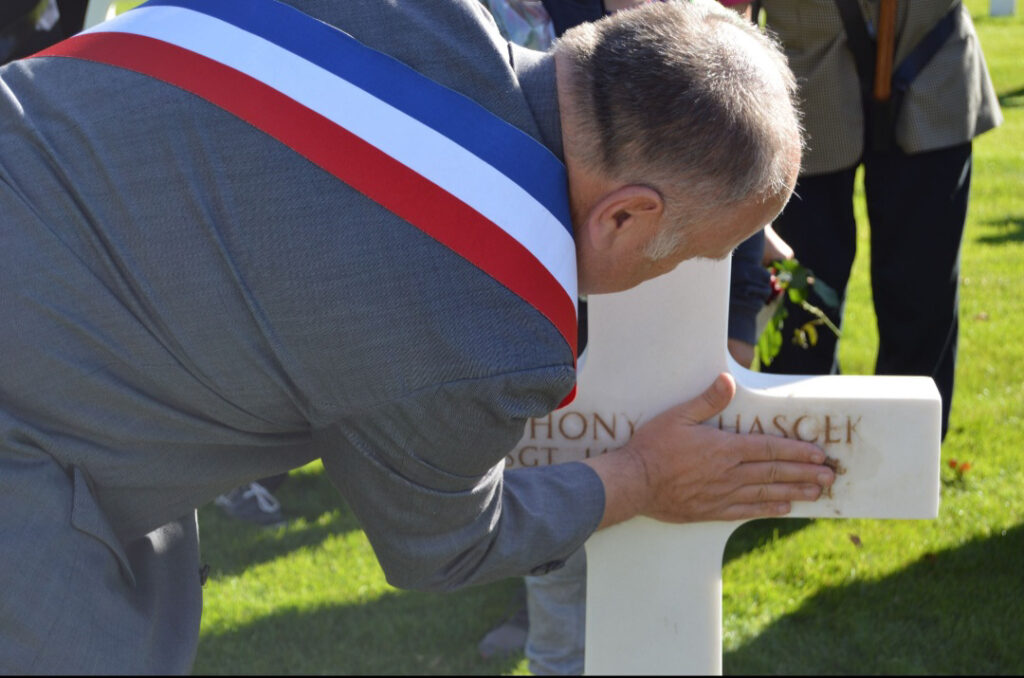
Gratitude
Anton Hascek’s contribution to Allied victory was significant. In the European Theater of WWII, Italy was the most costly campaign in terms of casualties suffered by infantry forces of both sides. Anton bravely fought his way through that country, participating not only in the battles documented above, but also in bitter, frequent, small-scale fighting around the numerous enemy strongpoints that stood in his way. Allied strength in Italy was vital to the outcome of the war as it occupied German forces which otherwise would have been deployed to France or elsewhere. Our Cranford soldier resolutely continued on to France to finish what he started.
Back at home, when asked to say something about her son, Anton’s mom Katherine wanted people to know that he was a lighthearted spirit, one who looked at life and was not afraid. I wonder how my father, still in the service himself, learned of the loss of his good friend. At the time of his brother’s death, Alfred Hascek was serving with the US Maritime Service in the Atlantic.
SGT Hascek’s body rests in the Epinal American Cemetery in France, located not far from the battleground on which he died. I contacted the cemetery and they assured me that “We are and will always be looking after your soldier, along with all of the others”. SGT Anthony J. Hascek’s resting place is given additional attention by the Municipal Youth Council from Anould, France, which has sponsored the grave since 2018.
The gratitude owed to men like Anton Hascek and his fellow servicemen is immeasurable. It is what pushes our team to uncover the details of what these men endured for their country and the world. Sharing what we discover is one of the most important things that we can do in their honor. We are very grateful to WWII veterans Joseph Massura and Nicholas Bozic, not only for their service, but for taking the time to share their stories of the 143rd. Their vivid descriptions allowed us to better understand the experiences of our hero from Cranford. These two men were blessed with long lives and lived well into their nineties. But now, all three of these soldiers, Anton, Joe and Nick have been reunited and are together. We wish them peace, and rest, and we salute them.
Please join us on Memorial Day 2023, where, as a part of Cranford’s steadfast tradition, we honor the memory and sacrifice of SGT Anton Hascek, along with all of Cranford’s 86. As always, we encourage anyone with knowledge of any of Cranford’s 86 to contact us at info@cranford86.org or via Facebook at Cranford86.
